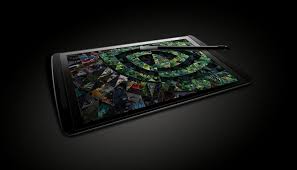Nvidia has joined Microsoft, Google, Amazon and a host of others this week as it became the latest company to break from its traditional role in the hi-tech industry and deliver a hardware product designed for the consumer and business market, in this case a 7-inch tablet.
The company teased the market months ago with a brief demo of the product, and discussed its plans for a low cost platform last year but now the Nvidia Tegra Note is a reality, and has a basic structure that the company will then offer to third party customers who can add their own features in order to differentiate their products.
The Tegra Note features Nvidia technology to power the system and its graphics and includes a Tegra 4 with a 72-core GeForce GPU and quad-core Cortex-A15 CPU with a fifth battery-saver core. It has a 7-inch display that has 1280 x 800 resolution.
A key technology that the company is touting is its DirectStylus that it claims is a significant improvement over other stylus technology with faster response time, a finer point and broader stroke control. It calls older stylus technology passive in comparison
It will run the latest version of the Android operating system, feature 16GB of storage with an expansion microSD slot, an HDMI port, a rear 5MP camera with a VGA front facing one and what the company calls HD Audio speakers. All for $199.
The company has a host of new as well as established partners that plan to deliver tablets based on this basic platform including EVGA and PNY Technologies in North America; EVGA, Oysters and ZOTAC in Europe; Colorful, Shenzhen Homecare Technology and ZOTAC in Asia-Pacific; and XOLO in India. They join other partners, including HP, ASUS, Toshiba, Kobo and Xiaomi, which have already announced Tegra 4-based products.
As tablets have seen their popularity soar over the last year it will be interesting to see how this cookie cutter method will work. Will the developers be able to create differentiated products or ones that have specialized and localized features that will make them appealing to the market?
It does seem that time to market could be cut for many of the developers because they have an almost finished product to start with, but then in reality so do a lot of other established players such as Samsung, Google and Apple.








